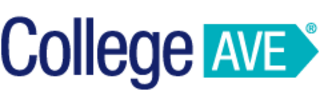The Average Tuition Discount at Private Colleges Hits 52%, a Record High

The typical private college student is now paying less than half the full price of tuition and fees as discounting hits a record high.
The average tuition discount rate at private colleges was 56.1% for freshmen and 51.9% for all undergraduate students for the 2023-2024 school year, according to a new study from the National Association of College and University Business Officers (NACUBO). Both rates represent all-time highs for the study, which has been conducted annually since 1994.
A college's discount rate is another way to describe how much it awards in scholarships and grants out of its own pocket. Officially, the term refers to the total institutional grant aid a college awards as a percentage of the total tuition and fee revenue it would collect if all students paid the full rack rate.
In other words, the NACUBO study finds that for every dollar of undergraduate tuition and fees colleges could have charged in 2023-2024, schools awarded roughly 56 cents of aid to freshmen and 52 cents to all undergraduates who received institutional grant aid. The findings are based on a survey of 325 private, non-profit colleges.
The results for the current school year are preliminary, since schools answered the survey in the fall before finalizing enrollment and aid packages for the spring semester. The final numbers may shift up or down, but the long-running trend of rising discount rates is likely to hold.
The average discount rate, for both freshmen and undergraduates overall, has increased almost every year in the past decade. In the 2014-2015 school year, the discount rates were 47.1% for freshmen and 41.3% for all undergraduates — about 9 to 10 percentage points less than they are for the current school year.
For comparison, in the same time period, published tuition prices at private colleges increased from an average of $31,280 to $41,540, according to a separate report from the College Board.
Which students receive tuition discounts?
While public colleges also award institutional grants, the practice of tuition discounting is far more common at private colleges, which have a different business model since they don't receive funding from state taxes.
Different private colleges have varied strategies for awarding their institutional aid. A small set of colleges, primarily the wealthiest, most selective institutions in the country, award grants and scholarships based strictly on financial need. At these colleges, lower-income students typically have a much lower net cost of attendance than their middle- and upper-income peers.
Other private colleges, particularly those that are competing for students, reserve a much larger portion of their financial aid budgets for non-need-based aid, usually called merit aid.
Regardless of a college’s financial aid policies, the reality is the same: Most — and in some cases, all — freshmen at private colleges receive institutional aid that reduces the price they have to pay. In fact, the NACUBO study finds that, on average, nine in 10 first-year students at the surveyed colleges received institutional grants in 2023-2024. The average award was equal to 62% of tuition and fees.
These rates, too, have increased steadily in recent years. A decade ago, the average student aid for those receiving institutional awards covered 53.9% of tuition and fees.
As the report authors write, “Over the past decade, the data show at least two distinct trends: More students received institutional aid, and the aid students received accounted for a higher share of the institutions’ tuition and fee sticker prices, on average.”
How tuition discounts affect college enrollment and revenues
Discounting is used as an enrollment tool at many colleges. The idea is that different students can afford to pay different prices, and discounting can attract students who are unable or unwilling to pay the full sticker price while still maximizing revenue from those students who do pay the higher rates.
In general, as published tuition rates, or sticker prices, have climbed, so, too, have discount rates at private colleges.
But there are many experts and analysts in higher education who say the continued rise of tuition discounts is unsustainable. The strategy only works in the long term if colleges are able to bring in enough new revenue to cover the cost of the discounts. And the NACUBO study finds that net revenue from tuition and fees has been volatile for the past decade. This year, preliminary data show a slight uptick in year-over-year net tuition revenue. Yet after accounting for inflation, it ends up looking like there will be a small drop, on average, in revenue from tuition for the 2023-2024 school year.
From a consumer perspective, the idea of a permanent sale on tuition probably sounds nice, given how expensive it can be to earn a college degree today. But there is a lot of criticism from this angle, too — namely that the high price, high aid model results in a lack of transparency around college costs.
Philip Levine, an economist who studies higher education, wrote in a Brookings Institute paper last month that current system of setting and communicating college prices does not work. His research shows that sticker prices are increasingly out of touch with the price students actually pay for college.
“We cannot expect students to make sound decisions regarding educational investments if they do not understand how much college will actually cost them,” he writes.
More from Money:
College Tuition Prices Are Actually Decreasing Thanks to Inflation







